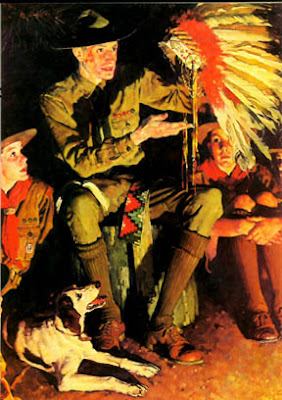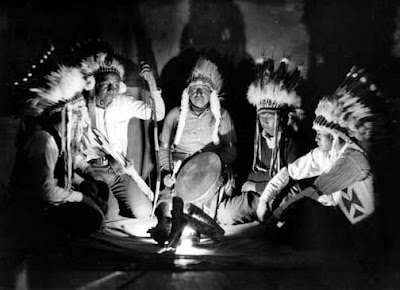 I've heard that geologists believe there were at least two great extinctions on Earth, one caused by an asteroid collision and the other by a volcano. I believe I can point to a third one, one that decimated funny cartoonists in the late 1920s and early 30s.
I've heard that geologists believe there were at least two great extinctions on Earth, one caused by an asteroid collision and the other by a volcano. I believe I can point to a third one, one that decimated funny cartoonists in the late 1920s and early 30s.Don't believe me? Look at Lantz's Oswald the Lucky Rabbit (above) which I assume is close to the design Disney used when he invented the character in the 20s. It's a bit flat but it has guts and looks like it can sustain comedy. I can imagine this guy putting a hot iron in his girlfriend's underpants.
 Here's (above) the same character years down the line. It's overdrawn, grotesque and definitely not funny. I can't even imagine pulling off a gag with a character like this. John thinks the studio mindlessly shot itself in the foot by attempting to copy Disney. Steve Worth thinks Lantz might have been a victim of his own success. Maybe he had so much work to get out that he had to hire a lot of unfunny people.
Here's (above) the same character years down the line. It's overdrawn, grotesque and definitely not funny. I can't even imagine pulling off a gag with a character like this. John thinks the studio mindlessly shot itself in the foot by attempting to copy Disney. Steve Worth thinks Lantz might have been a victim of his own success. Maybe he had so much work to get out that he had to hire a lot of unfunny people.  Here's (above) another version which is cuter and more appealing. You can do some gags with a character like this but only some. The design emphasizes charcter and dimensional animation possibilities, not comedy. This was the era of the Great Extinction. If you were funny and worked at one of the big cartoon studios then you probably kept your jokes to yourself... that is, until Tex and Clampett came along.
Here's (above) another version which is cuter and more appealing. You can do some gags with a character like this but only some. The design emphasizes charcter and dimensional animation possibilities, not comedy. This was the era of the Great Extinction. If you were funny and worked at one of the big cartoon studios then you probably kept your jokes to yourself... that is, until Tex and Clampett came along.  Print media underwent a similar extinction. Opper (above) was doing funny cartoons in 1903. Somewhere in the 20s a lot of the Opper-types were weeded out and a new species replaced them (below)...
Print media underwent a similar extinction. Opper (above) was doing funny cartoons in 1903. Somewhere in the 20s a lot of the Opper-types were weeded out and a new species replaced them (below)... ...the designers! One of the best designers was George McManus (that's his strip above). His stuff is beautifully drawn but it's not exactly funny. Mc Manus could be hilarious when he wanted to be but during The Great Extinction funny artists had to keep a low profile. Exceptions can be found: Milt Gross, Segar, Goldberg and De Beck; nevertheless, open any newspaper cartoon anthology from this period and you'll have to look hard for the practitioners of funny.
...the designers! One of the best designers was George McManus (that's his strip above). His stuff is beautifully drawn but it's not exactly funny. Mc Manus could be hilarious when he wanted to be but during The Great Extinction funny artists had to keep a low profile. Exceptions can be found: Milt Gross, Segar, Goldberg and De Beck; nevertheless, open any newspaper cartoon anthology from this period and you'll have to look hard for the practitioners of funny. Eventually the writers (including artist/writers) took over. Little Orphan Annie (above) had so much dialogue that the charcters must have become stoop-shouldered. Newspaper strips of this era were READ, just like a novel. Eventually a counter-revolution was mounted but that's another story. The Great Extinction in print media raged for decades and it's still with us, even today.
Eventually the writers (including artist/writers) took over. Little Orphan Annie (above) had so much dialogue that the charcters must have become stoop-shouldered. Newspaper strips of this era were READ, just like a novel. Eventually a counter-revolution was mounted but that's another story. The Great Extinction in print media raged for decades and it's still with us, even today. 














































